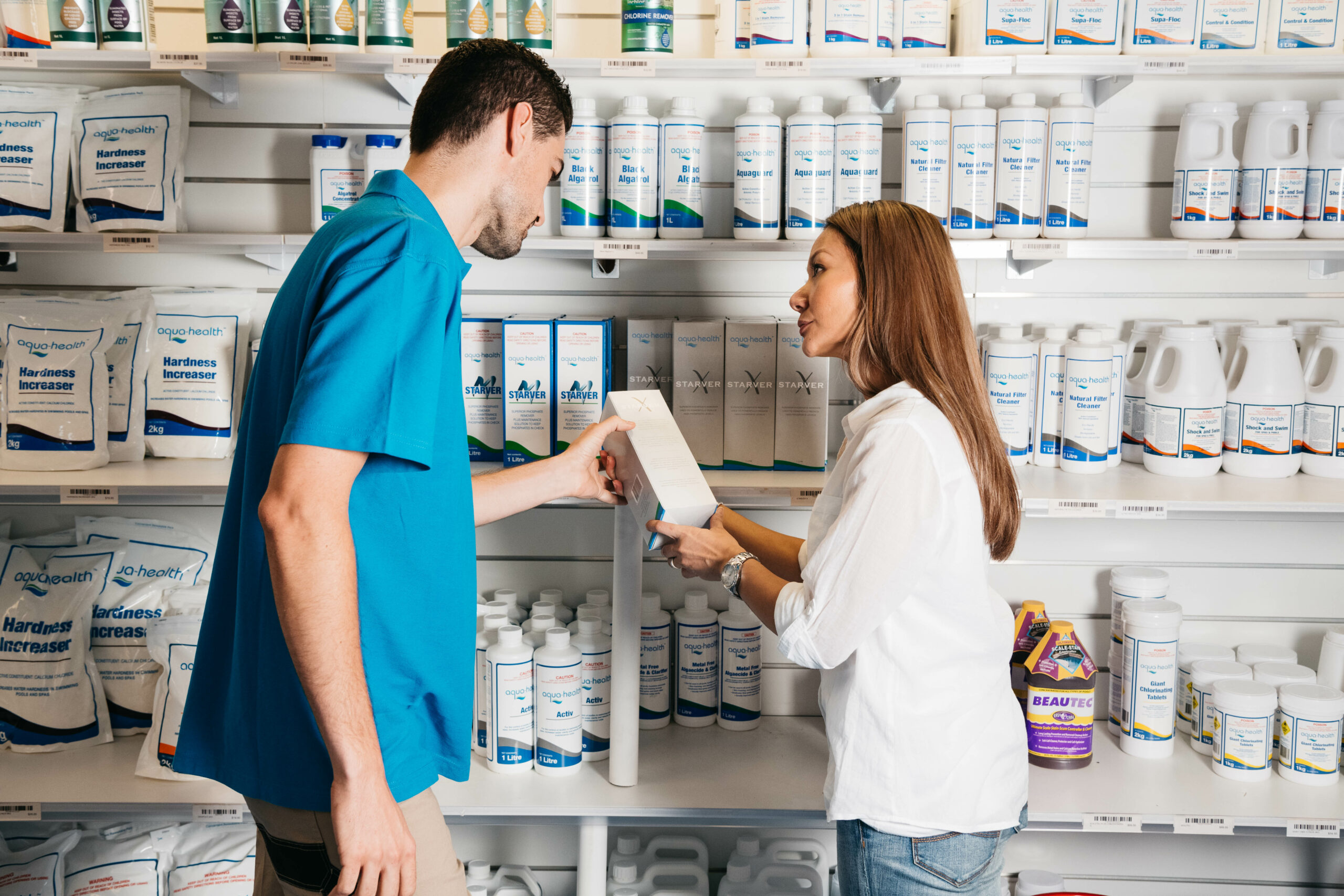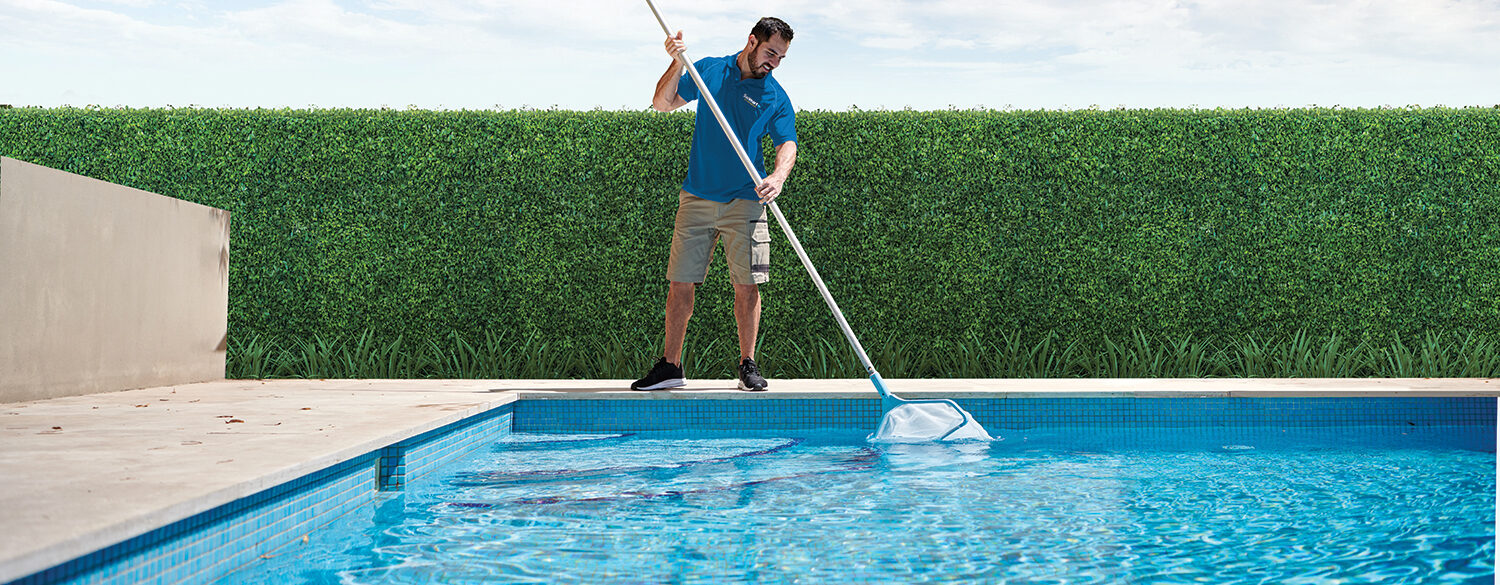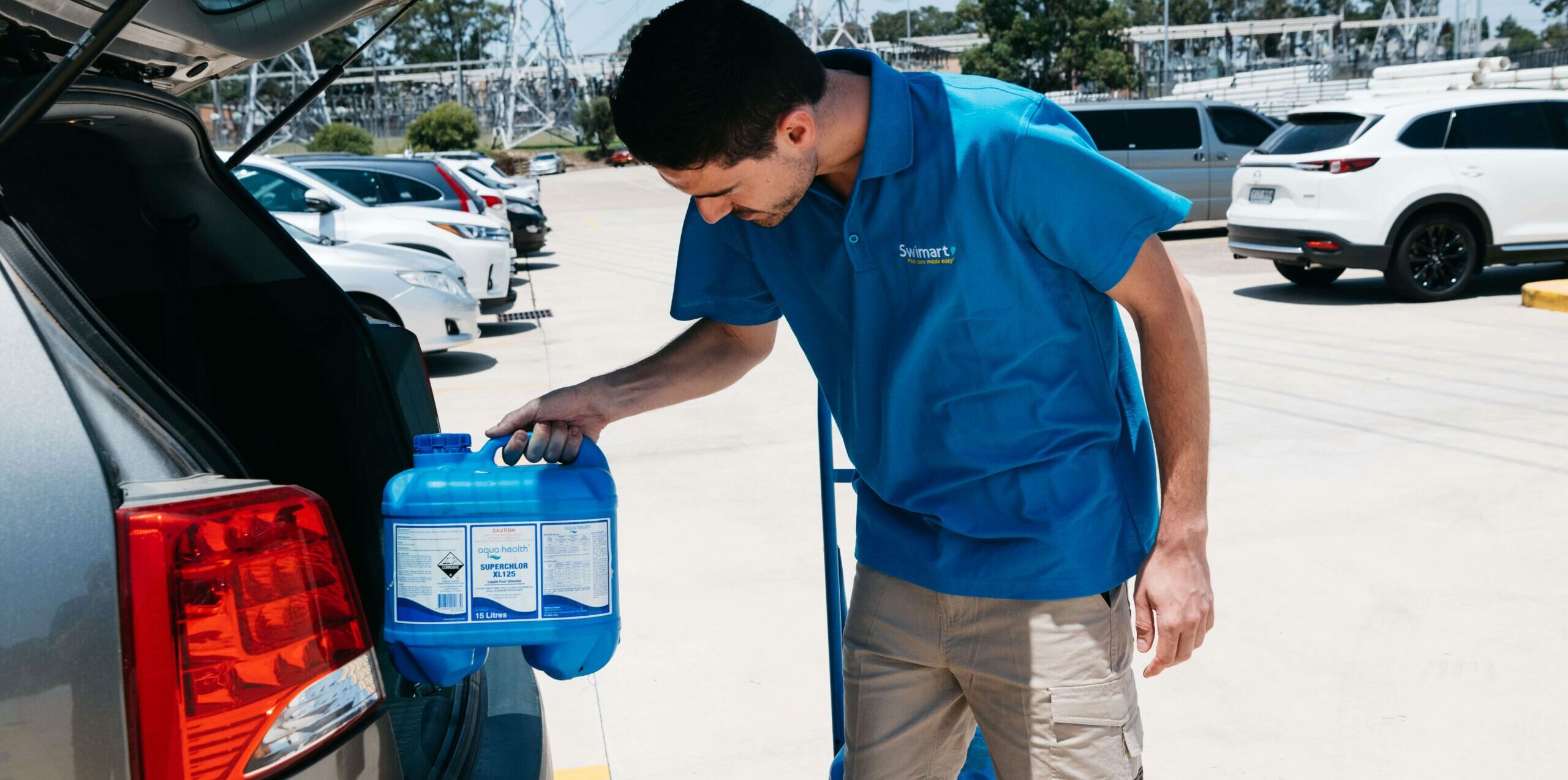DIY Tips
GO FROM GREEN TO CLEAN WITH SWIMART’S 5 SPRING POOL TIPS
19 September 2017
With the thermometer in the low 20s for many parts of Australia and a warmer-than-average spring predicted for most of the country*, many of us will want to start enjoying our swimming pool (if you haven’t dived in already). And right now is the perfect time to prepare your pool so it’s ready to take advantage of the warmer days – even if you live in the cooler parts of Australia and New Zealand.
“Over winter, sun and rain dilutes pool chemicals, especially chlorine and salt, which turns pool water green and helps algae get a hold and grow,” says Swimart Australasian manager Chris Fitzmaurice. “While microscopic in size, if your pool water lacks the right balance of chemicals, algae can multiply, turning your pool water green and creating patches of yellow, pink or black on the surface of your pool.”
Aside from making your pool look uninviting, algae can damage pool equipment and make your friends and family ill as it often harbours bacteria like E. coli. “If you’ve let maintenance fall by the wayside over winter, it’s likely the pool water isn’t as clean and healthy as it needs to be,” explains Chris.
If your pool is looking a little green or has algal blooms across its bottom, these five steps will quickly return it to peak condition, ready for that first swim.
Step 1. Take a sample of your pool water to your local Swimart store for a free computerised test
The results will indicate whether your pool needs its pH, calcium and total alkaline levels adjusted. A Swimart consultant will advise you on the best course of action and recommend products. While you're there, pick up a test kit if you don't have one so you can regularly check and maintain levels throughout spring and summer.
Learn more about pool chemistry here, and how to fix the five common causes of cloudy pool water here.
Step 2. Check and clear your equipment, and run the filter and pump
Before you add any products to your pool, turn your pump on (if it isn’t already running) and run it for a few hours to help clear debris and dirt from water. While the pump is doing its job, check the filter, skimmer box and pump to ensure they are all working efficiently and clear any blockages or calcium build-ups.
If your filter cartridge needs a clean, simply give it a good wash with the hose. If you have a Diatomaceous Earth (D.E.) filter, you may need to take it apart and clean it with a small brush and water. If you have a sand filter, set it to backwash to flush it out (don’t forget to return it to its normal setting). Your local Swimart technician can check and clean your equipment and advise on any required service or replacements.
Are you looking to upgrade your filter or filter media? Then take a look at Swimart's extensive range of quality and reliable brands.
Step 3: Add a sanitiser
Your pool water may need to be sanitised to condition and ready it for other treatments. Swimart recommends a chlorine-free treatment called Aqua-Health Ultra Shock, which destroys organic waste and leaves your pool water clean and sparkling. Simply dose while the pump is running and wait a few hours before swimming.
For a more rapid sanitising effect, Aqua-Health’s Aqua~Health Giant Chlorinating Tabs can be added straight to the skimmer without the use of a floating dispenser. They’re easy to use, have a built-in stabiliser, and do not alter water hardness.
Spa owners can use the dual-action Poppits Spa Sanitiser – which is also free from chlorine and bromine – as it cleans and conditions in one simple action. Using hydrogen peroxide to oxidise the bacteria in spa water, it also prevents the build-up of organic slime on the walls and seats.
Step 4. Re-balance the pool water
Treat your pool water with the products and dosages recommended by your local Swimart technician. Depending on your pool’s current water quality, you may need to add chlorine, an algaecide and acid to adjust the pH level (optimal level is between 7 and 7.6). Getting your pool water’s pH level right is important as it dictates how much chlorine turns into hypochlorous acid (HCIO), an active ingredient needed to kill germs, algae and bacteria.
Pool water turns green when the chlorine level is too low. If your pool water’s chlorine is below 0.5ppm (your Swimart technician can determine its level), you need to ‘shock’ the water with a large dose of chlorine to get it to 10ppm. Run the filter after dosing and don’t enter the pool until the chlorine level falls below 3ppm (high chlorine levels can cause itchy skin and red, dry eyes).
Step 5. Clean your pool’s surfaces
Brush your pool’s walls, which helps remove algae and loosen dirt. Swimart's Aqua Fingers is designed to cut open the hard membranes of “Black Spot” algae so that an algaecide can effectively kill the algae.
Now for the final step – vacuuming. Swimart has a great range of models, including the all-terrain Trident robotic pool cleaners, Polaris' suction and pressure cleaners, and Waterco's SwimKleen MKII pool cleaner.
Before you let the kids have a swim, ensure the area surrounding your pool is free of uneven pavers or obstacles that may cause accidents or injury. Also, check your pool fence, child-proof gate and latch are in good working order, position a Resuscitation Chart pool side, and move any furniture and pot plants away from the pool fence so young children can’t use them to climb into the pool area. (Here are some great pool safety tips.)
Most importantly, remember to supervise children when they are in the pool area – especially if they haven't swum since last summer. “Spring is a good time to reacquaint or re-enrol your kids in swimming lessons,” adds Chris.
To find a swim school in your neighbourhood, visit the Royal Life Saving Society swim school locator.
* http://www.bom.gov.au/climate/outlooks/#/overview/summary/
Does your pool or spa need a professional clean and equipment check before the summer heat hits? Call Swimart on 1300 991 104 or visit your local Swimart pool and spa shop to book an on-site visit.


 AUS
AUS NZ
NZ 


